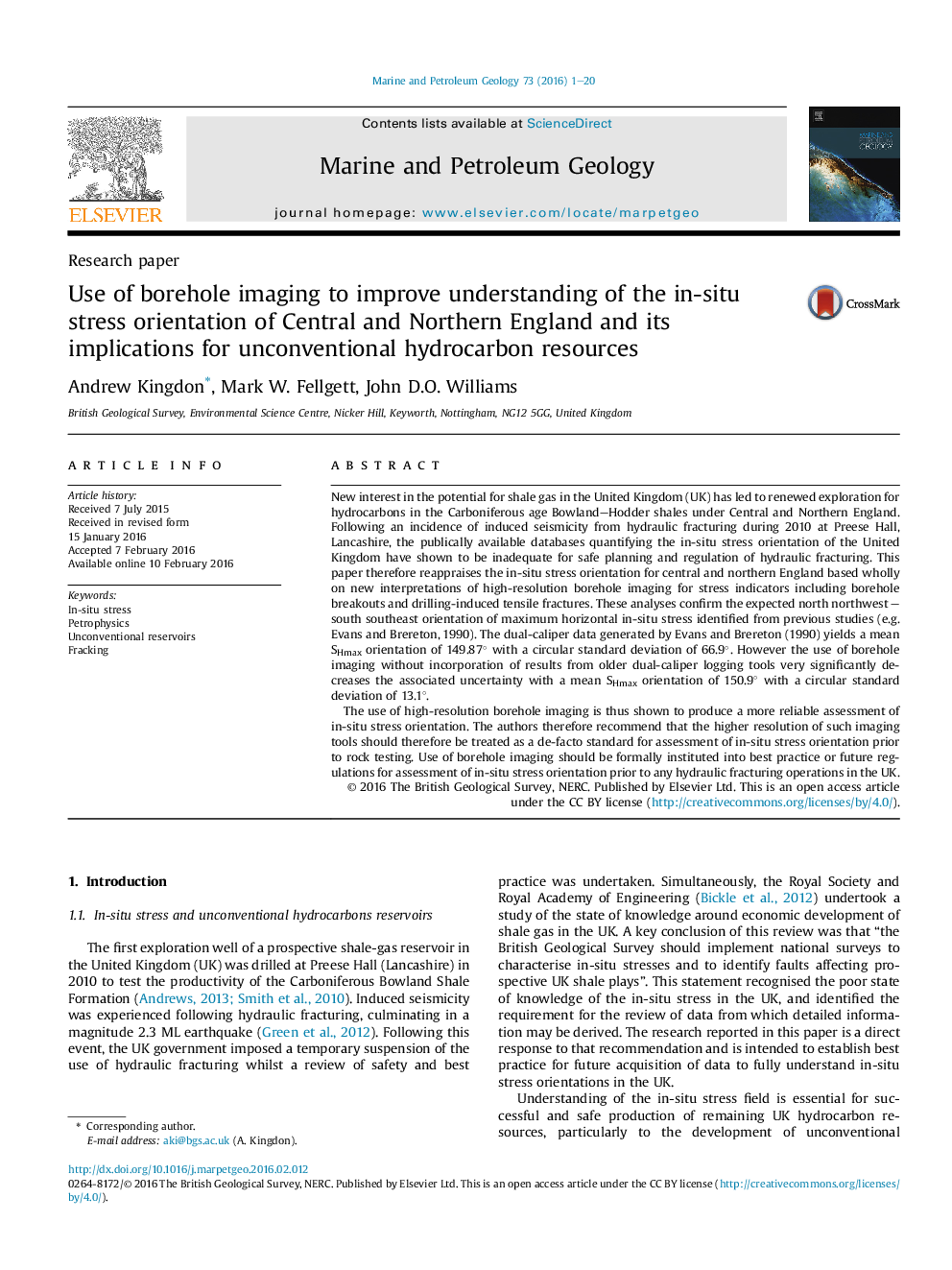| کد مقاله | کد نشریه | سال انتشار | مقاله انگلیسی | نسخه تمام متن |
|---|---|---|---|---|
| 6434772 | 1637154 | 2016 | 20 صفحه PDF | دانلود رایگان |
- The stress orientation for northern and central England is extremely uniform.
- Mean maximum horizontal stress orientation is 150.9° with circular standard deviation of 13.1°.
- Borehole imaging drastically improves breakout identification.
New interest in the potential for shale gas in the United Kingdom (UK) has led to renewed exploration for hydrocarbons in the Carboniferous age Bowland-Hodder shales under Central and Northern England. Following an incidence of induced seismicity from hydraulic fracturing during 2010 at Preese Hall, Lancashire, the publically available databases quantifying the in-situ stress orientation of the United Kingdom have shown to be inadequate for safe planning and regulation of hydraulic fracturing. This paper therefore reappraises the in-situ stress orientation for central and northern England based wholly on new interpretations of high-resolution borehole imaging for stress indicators including borehole breakouts and drilling-induced tensile fractures. These analyses confirm the expected north northwest - south southeast orientation of maximum horizontal in-situ stress identified from previous studies (e.g. Evans and Brereton, 1990). The dual-caliper data generated by Evans and Brereton (1990) yields a mean SHmax orientation of 149.87° with a circular standard deviation of 66.9°. However the use of borehole imaging without incorporation of results from older dual-caliper logging tools very significantly decreases the associated uncertainty with a mean SHmax orientation of 150.9° with a circular standard deviation of 13.1°.The use of high-resolution borehole imaging is thus shown to produce a more reliable assessment of in-situ stress orientation. The authors therefore recommend that the higher resolution of such imaging tools should therefore be treated as a de-facto standard for assessment of in-situ stress orientation prior to rock testing. Use of borehole imaging should be formally instituted into best practice or future regulations for assessment of in-situ stress orientation prior to any hydraulic fracturing operations in the UK.
Journal: Marine and Petroleum Geology - Volume 73, May 2016, Pages 1-20
